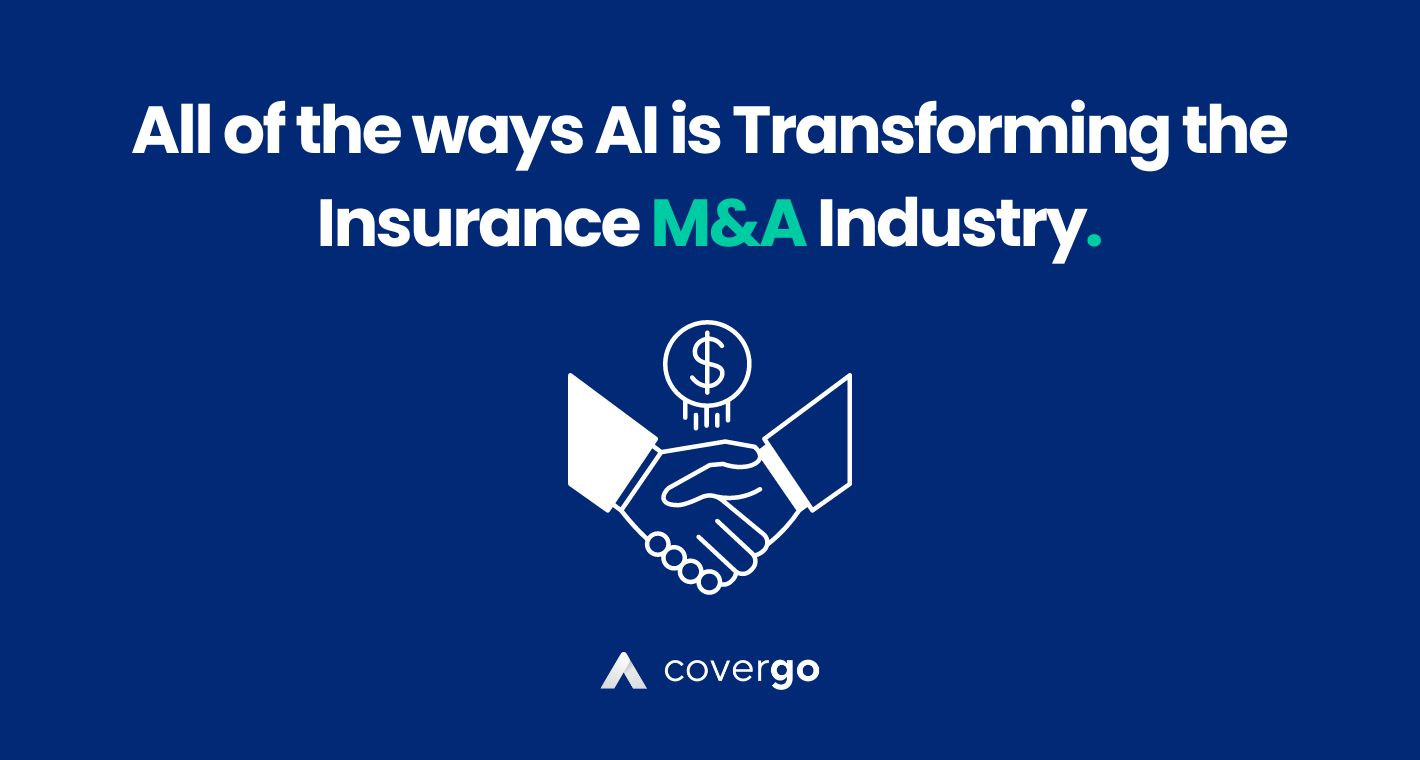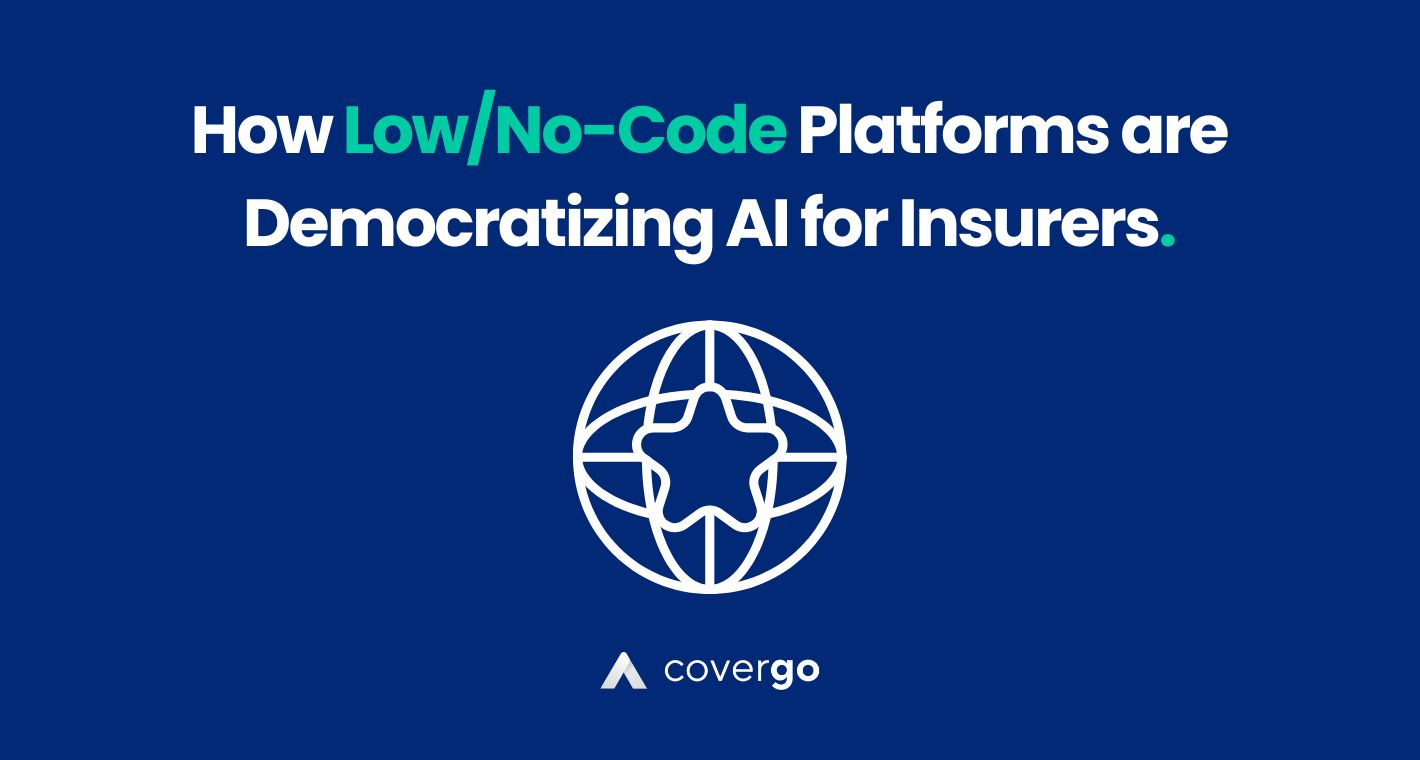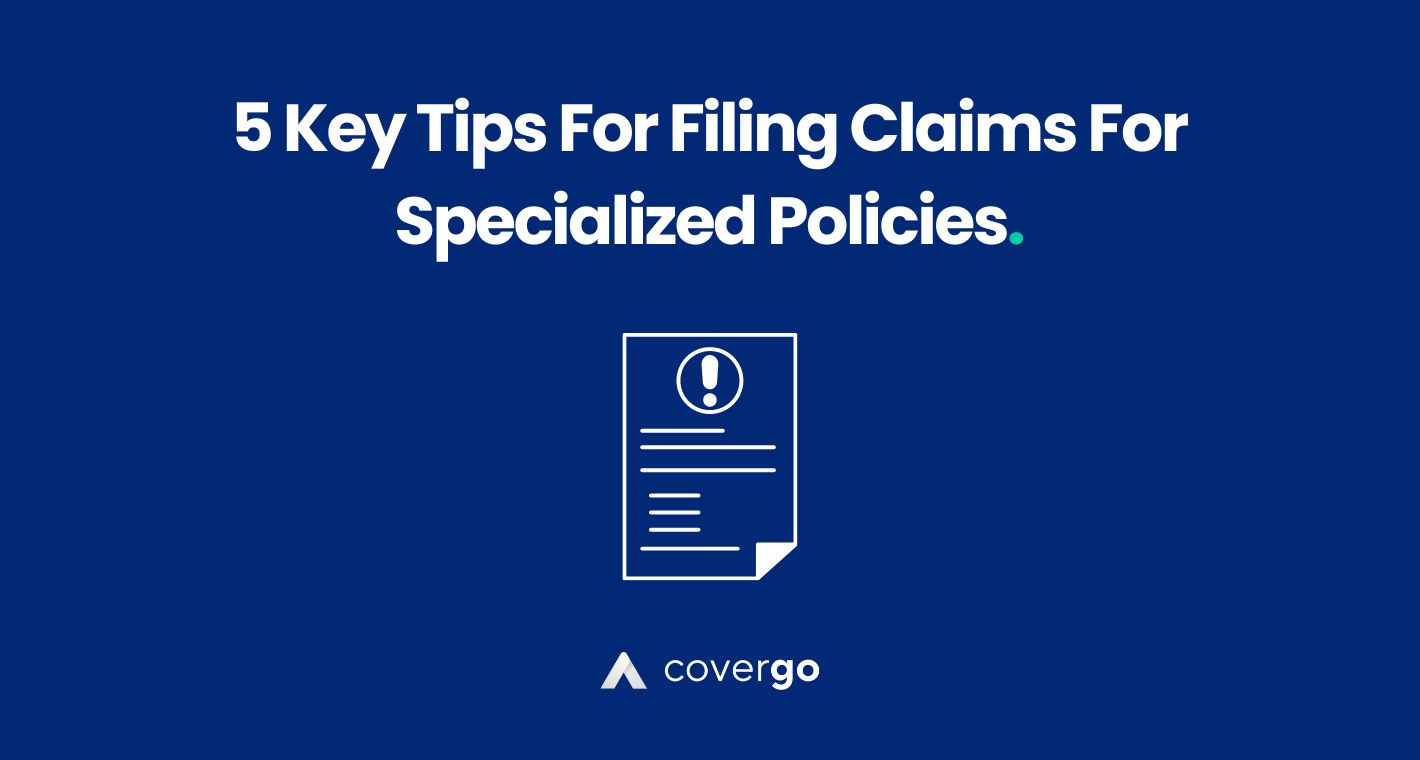Key Takeaways:
- AI’s introduction in recent years has led to significant changes within every industry and organization type, particularly M&A’s in the insurance industry. These changes exist for three reasons.
- PE firms have tight deadlines regarding due diligence, forcing employees to use the latest and most time-saving technology.
- Employees at PE firms are extremely data-driven and want to get the best possible deal out of an M&A and hence need a tool to assist them beyond their current judgments.
- PE-backed firms are incentivized to use the latest technologies to increase their profits.
Capabilities of AI within the Insurance Industry
In today’s rapidly evolving insurance landscape, artificial intelligence (AI) is revolutionizing the way companies operate and interact with their customers. From enhancing pricing and underwriting processes to optimizing distribution channels, AI is becoming an indispensable tool for insurers.
Not only does AI streamline customer service and claims handling, but it also enables real-time monitoring and risk assessment, allowing insurers to make more informed decisions.
Pricing & Underwriting
By utilizing AI, insurers can analyze and synthesize massive volumes of data in seconds with remarkable accuracy. This breakthrough allows companies to process information swiftly, enhancing their ability to make informed decisions and improve operational efficiency.
Personalized Pricing Models
One of the most significant advantages of AI in insurance is the ability to create personalized pricing models. By analyzing individual behaviors, driving patterns, and health data, insurers can develop premiums that accurately reflect each customer’s unique risk profile. This personalization fosters fairness and transparency, ensuring that clients receive competitive rates tailored to their specific circumstances.
Simplifying Complex Calculations
AI also simplifies the analysis of large datasets, making it easier to develop actuarial models and perform complex calculations. These tasks, once labor-intensive and prone to error, are now streamlined through automation. This not only increases the precision of predictions related to claims and policy pricing but also enables insurers to adapt quickly to new market trends.
Boosting Distribution
AI is making waves in the insurance industry, particularly in the realm of distribution. By using the power of AI, insurers can gain a deeper understanding of their customers, paving the way for more personalized insurance plans. This insight allows companies to tailor offerings to meet the unique needs of each client, enhancing customer satisfaction and loyalty.
Personalized Plan Recommendations
AI excels at analyzing customer data to recommend a variety of personalized insurance plans. This not only provides clients with multiple options suited to their specific needs but also opens up new cross-selling opportunities for insurers. By offering diverse and tailored plans, insurers can increase their revenue streams while ensuring clients receive the most relevant coverage.
Predicting Future Outcomes
Another significant advantage of AI in insurance distribution is its ability to predict future outcomes. By analyzing customer behavior, market trends, and other relevant data, AI can forecast potential risks and opportunities. This predictive capability enables insurers to make proactive decisions, optimize their offerings, and stay ahead of the competition.
Enhancing Customer Service
AI is revolutionizing customer service in the insurance industry by introducing AI chatbots. These intelligent systems can automate interactions, providing quick and efficient responses to customer inquiries. By leveraging natural language processing, chatbots can handle numerous queries simultaneously, ensuring that customers receive timely assistance.
Moreover, AI can analyze consumer feedback across various channels. By understanding sentiment and detecting issues, insurers can enhance customer satisfaction significantly. This capability allows companies to identify pain points in their services and address them proactively, leading to improved customer loyalty and retention.
Streamlining Claims Handling
The claims process has traditionally been one of the most cumbersome aspects of insurance. However, AI is here to change that. By automating internal processes, AI minimizes manual errors, increases operational efficiency, and significantly reduces expenses.
One of the standout features of AI in claims handling is its ability to analyze past data and patterns to detect dubious claims. When a claim is reported, AI can provide real-time support during the registration phase, analyzing the claim form for correctness and scoring the claim based on its validity.
During the review and investigation stages, AI plays a critical role in verifying the claimant’s identity and ensuring compliance with policy conditions. It conducts anti-fraud checks, provides claim decisions, and adjusts case reserves accordingly.
In cases where claims are rejected, AI can streamline communication with clients by automatically generating rejection letters. Conversely, when claims are settled, AI can facilitate communication and payment processing, ensuring a smoother experience for the claimant.
Furthermore, throughout the claim revision process, AI contributes to fraud detection, process monitoring, claim portfolio analysis, and the generation of automated reports and dashboards. This comprehensive approach not only enhances operational efficiency but also fosters transparency and trust between insurers and their clients.
Post Merger Integration
AI can reduce the manual workload and grunt work employees have to perform and instead allow them to perform tasks where they are giving new and innovative ideas. AI tools can evaluate massive volumes of data from merging businesses to uncover synergies, possible dangers, and cost-saving opportunities. This allows for faster, more informed decision-making.
Corporate culture alignment is also a very important task once the merger has taken place however it can become difficult to navigate through this process without the help of AI. AI can analyse employee sentiments and engagement data and synthesise it quickly so that managers can decide how to navigate the transition.
AI can look over anything missed by human analysts when conducting due diligence. If, during the due diligence process, the company encounters potential risks, AI can be deployed to create mitigation strategies based on predictive analytics.
Potential Risks that arise from the use of AI
Despite the benefits of using AI to automate tasks that arise from insurance M&As, it is important to note that with these benefits come risks that could jeopardise the goals of the company.
- Data Privacy and Security: AI systems frequently demand vast volumes of data, which may contain sensitive client information. This heightens the danger of data breaches and privacy violations.
- Bias and Discrimination: AI algorithms might unintentionally perpetuate or even worsen prejudices in the data they are trained on. This can lead to unjust treatment of specific consumer groups, potentially leading in regulatory scrutiny and reputational harm.
- Model Explainability: Many AI models, particularly complicated ones such as deep learning, function as “black boxes,” making it difficult to explain how they reach certain judgments. This lack of openness might pose problems for regulatory compliance and consumer confidence.
- Adversarial assaults: AI systems are susceptible to adversarial assaults, in which malevolent actors modify input data to trick the AI into making wrong conclusions. This may jeopardize the integrity of the AI’s outputs.
- Regulatory Compliance: The use of AI in insurance is subject to a variety of restrictions, which might differ dramatically among jurisdictions. Maintaining compliance with all applicable rules and regulations may be difficult and expensive.
- Integration Challenges: Merging AI systems from various firms can be technically difficult and result in integration challenges. These issues might delay the achievement of synergies and raise operational risk.
- Operational hazards: Overreliance on AI might result in operational hazards if the AI systems fail or generate inaccurate results. This can have an impact on key company processes including underwriting, claims processing, and customer service.
So, what AI tools should I use to assist me in this process?
Disclaimer: We won’t be recommending ChatGPT or other AIs that use LLMs as they still have significant challenges such as those mentioned above and can be detrimental if it provides the wrong information.
Deal Valuations
In today’s fast-paced financial environment, precise deal valuations are critical for making educated decisions. Using modern technology and analytics may dramatically improve the valuation process, allowing businesses to appraise possible purchases more accurately. Alteryx shines well in this arena, offering powerful features to enable financial analysis.
- Altaryx: provides powerful analytics and data processing capabilities that can be utilized to simulate financial situations and determine transaction value.
Identifying Targets
Identifying possible acquisition targets is an important phase in any strategic expansion plan. Companies that use advanced data analytics and artificial intelligence might receive insights into prospective prospects that correspond with their company goals. Platforms such as CB Insights and Pitchbook stand out in this space, providing detailed analysis and real-time data on possible targets.
- PitchBook: This platform employs artificial intelligence to give detailed information about possible acquisition targets, such as financials, market position, and growth prospects.
- CB Insights: Utilises ML to identify new companies as well as the latest technologies aligning with your goals as a company
Synergy Identification
Identifying synergies during mergers and acquisitions is critical to maximize value and ensure a seamless integration. Advanced analytics and AI techniques can help with this process by identifying possible operational efficiencies and difficulties.
- IBM Watson: Watson, which is well-known for its natural language processing and machine learning skills, can analyze data from both firms to uncover operational synergies and integration opportunities.
- Accenture M&A Analytics: AI and advanced analytics is used to discover possible synergies and integration difficulties, hence optimizing the post-merger integration process.
Due Diligence
A rigorous due diligence process is required in each merger or acquisition to guarantee that all possible risks are recognized and handled. Leveraging AI technology can improve the efficiency and accuracy of this procedure, especially when analyzing complicated legal paperwork.
- Kira Systems: This AI application automates the evaluation of contracts and other legal documents, accelerating the due diligence process and mitigating the risk of human error.
Predictive Analytics
Predictive analytics helps firms make strategic decisions by forecasting future trends and consequences. Companies may acquire important insights from historical data by using modern data visualization technologies that are connected with artificial intelligence. Particularly, with tools such as Tableau.
- Tableau: Despite Tablue primarily being a data visualization tool, its integration with AI can aid in forecasting patterns and outcomes based on past data.
AI is the Future of Insurance M&As
Insurance M&As are more difficult than ever to conduct especially with PE firms running on strict deadlines and juggling with not only one M&A but multiple at the same time. Due to this high-stress environment, it is nearly inevitable for there to be blunders in this process.
Visionary leaders at PE firms have realised this and understand the need to work efficiently with the timelines they have and hence embrace the power of AI so that their employees spend less time reading documents and more time focusing on what decisions to make next. The push towards integrating more AI tools in the process will benefit not just Insurance M&As but both the Insurance sector and M&A industry as a whole.
Learn more about the new capabilities of AI in insurance today, only with CoverGo!
FAQs
AI plays a crucial role in Insurance M&A due to its ability to streamline due diligence processes, improve deal valuations, and identify potential risks. It assists in enhancing decision-making by providing valuable insights and automating complex tasks.
AI empowers PE firms and insurers by enabling faster data analysis, personalized pricing models, efficient claims handling, and improved customer service. It facilitates synergy identification, predictive analytics, and enhances post-merger integration processes.
Implementing AI in Insurance M&A introduces risks related to data privacy, bias in algorithms, explainability of models, adversarial attacks, regulatory compliance, integration challenges, and operational hazards. Companies must address these risks to ensure successful AI deployment.
Several AI tools like Alteryx for deal valuations, CB Insights and PitchBook for target identification, IBM Watson and Accenture M&A Analytics for synergy identification, and Kira Systems for due diligence automation are instrumental in enhancing efficiency and accuracy in Insurance M&A processes.
Recent posts
- How Low/No-Code Platforms are Democratizing AI for Insurers
- All of the ways AI is Transforming the Insurance M&A Industry.
- 10 Crucial Mistakes to Avoid When Filing an Insurance Claim
- 5 Important Tips That Will Make Filing Claims For Specialized Policies a Breeze
- Artificial Intelligence as The New Defender Against Insurance Fraud



